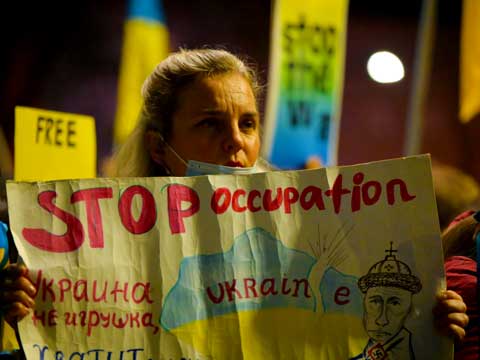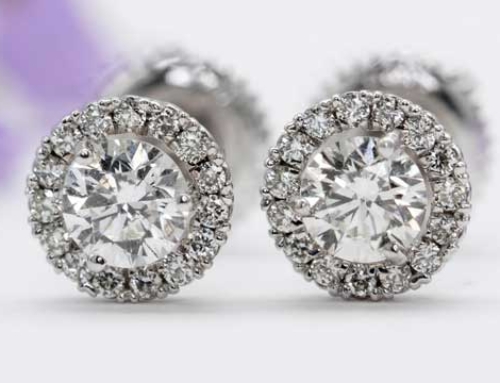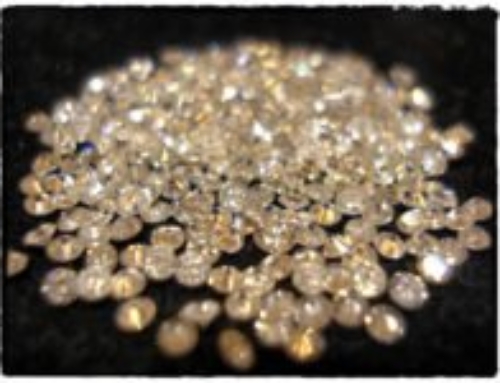As far as diamond prices go sanctions imposed against ALROSA only resulted in the smaller gem and near-gem quality goods outperforming other categories in recent months, according to an independent diamond analyst Paul Zimnisky.
He told Rough&Polished’s Mathew Nyaungwa in an exclusive interview that diamond prices generally remained steady as the industry was fully stocked going into February, coupled with the seasonally slow time of the year for the industry.
Zimnisky also said that the trade of Russian goods had declined since the end of May, partly due to the difficulties transacting in U.S. dollars and also because manufacturers are hesitant to buy if their clients are specifically requesting non-Russian goods.
Below are excerpts of the interview:
Zimnisky publishes a professional monthly subscription-based industry report called “State of the Diamond Market” that includes all of his data, forecasts and analysis. He also hosts a podcast where he discusses diamonds with special guests from the industry. It’s called the Paul Zimnisky Diamond Analytics Podcast and can be streamed on Apple Podcasts, Spotify or the web.
What is your projection of the global diamond output this year, given the sanctions imposed on ALROSA?
“I am forecasting global natural production of about 120 million carats this year. I think it would be reasonable for ALROSA to curtail production given the circumstances, so I am forecasting that ALROSA output will be below the 34 million carats they guided earlier this year. Longer-term, I am forecasting that global production will fall in a range of 115-125 million carats annually for the remainder of this decade. For context, I estimate that production was as high as 150 million carats as recently as 2017 – so the new normal is well below that.”
What has been the effect of the ALROSA sanctions on rough diamond prices?
“Certain categories have outperformed in recent months, notably, smaller gem and near-gem quality goods.
These are categories in which a large percentage of global supply comes from Russia, so I think this price action is directly related to the sanctions. However, in general, diamond prices have remained steady, but prices have not surged the way that oil and wheat have, for example. I think this is because the industry was fully stocked going into February, and given the seasonally slow time of the year for the industry, supply shortages have yet to be fully reflected in prices.”
Why is there not much movement in the diamond prices despite the limited supply?
“I think this in part ties into the above response, but also because there is a lot of uncertainty in the market right now, and not just on the supply side. Central banks around the world have to rein in the massive amounts of liquidity provided during the pandemic, and they have to do this with greater urgency than usual due to multi-decade inflationary pressures. This is a recipe for stagflation, which is miserable for consumers and will impact jewellery-spend. We are probably already in a recession in the U.S. I don’t think it will be super severe, but we will certainly feel it. That said, a real economic crisis is on the table of possibilities if things go wrong, I don’t think that happens, but the chance of it happening is a lot higher than it was say three years ago. So, I think the trade is a little nervous and is thus being cautious, rightfully so.”
What is the impact of sanctions on Russia’s diamond trade?
“The trade of Russian goods has slowed dramatically according to my contacts in the industry, especially since the end of May. This is in part due to the difficulties transacting Russian goods in U.S. dollars and also because manufacturers are hesitant to buy if their clients are specifically requesting non-Russian goods. We have seen the industry’s major downstream players such as Signet Jewelers, LVMH and Richemont pledge not to buy new Russian goods, so this is putting pressure on their suppliers.”
Which diamond manufacturers have been greatly affected by sanctions on ALROSA?
“Most manufacturers that I have talked to are being impacted in one way or another. But, I think those that deal exclusively in smaller goods are finding themselves in short supply of rough. Many manufacturers have paired production and have had to cut worker hours.”
Why are they [the diamond manufacturers] susceptible to these sanctions?
“Manufacturers are towards the front-end of the supply chain, so they are feeling the pinch first. I think as we approach the second half of calendar 2022, the downstream will start to feel supply shortages as well, however, if demand significantly falls due to the macroeconomic situation, it will offset some of this.”
How is De Beers taking advantage of the sanctions imposed on ALROSA?
“De Beers has said they are already producing at full capacity, so there is not much that they can do as far as providing more supply. Last month, the company said they are now using their new diamond provenance ‘technology platform,’ Tracr, to track diamonds ‘at scale.’ I think the current situation probably upped their priority for rolling out this initiative.”
To what extent will the sanctions on ALROSA trigger demand for verification of the source of diamonds?
“I think this will be the main story of the industry this year. The diamond industry has been working on supply chain transparency initiatives for a few years now, but I think the sanctions served as a catalyst to speed all of this up. For example, the Gemological Institute of America (GIA), the industry’s leading grading institute, recently said that it will soon offer diamond source verification with grading reports at ‘no additional cost.’ So, I think we are on the way to seeing the origin of most grading reports along with the traditional 4 C’s.”
What benefits can the synthetic diamond industry derive from the sanctioning of ALROSA?
“I think this is providing the lab-grown industry with a great opportunity –this is one of the first things I thought of when all of this was first unfolding. However, perhaps this could inadvertently boost the natural industry as well if all of this results in higher natural diamond prices. Over the last few decades, I think the natural diamond industry lost its way a little bit by allowing its product to sell at less-than-premium price points. Natural diamonds should be marketed as the highest-end luxury item you can buy, and higher prices support this perception. Diamonds arguably fall into the category of a Veblen good, meaning the higher the price the more desired they become.”






